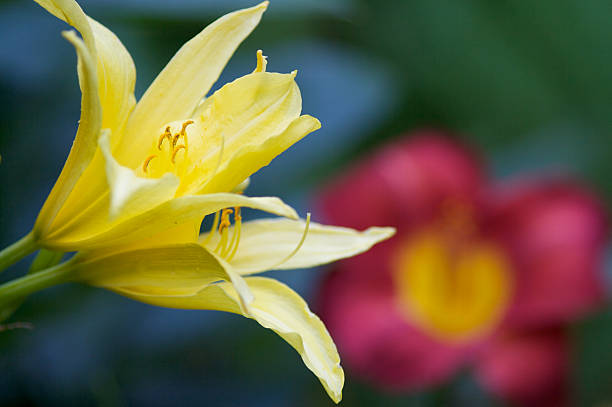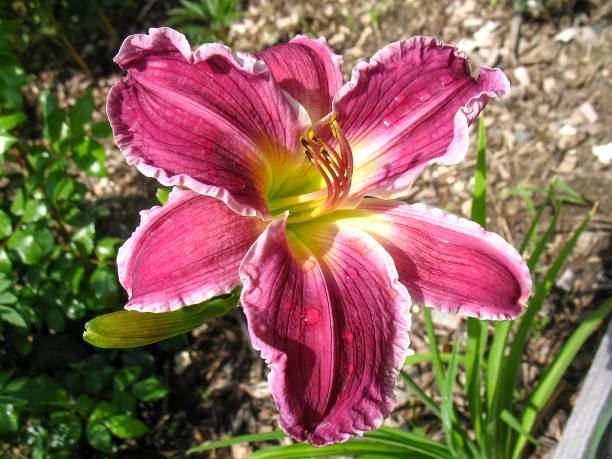When Should You Divide Your Daylily?
Daylilies can be divided at any time when they are old enough and establish strong roots. Usually, it takes two years and reaches 3 feet in diameter. After that, they can be divided every 3-5 years. It’s best to do it when they’re done blooming in late summer to fall. Daylilies multiply by dividing. When you divide a daylily clump, you create new individual plants that can be replanted and grown into full-sized plants. This is a great way to propagate daylilies and keep them healthy and blooming for years to come. You can also divide daylilies in the early spring. They should be split up and replanted at least six weeks before the average first frost in areas with a lot of hard frosts. Wait until the temperatures begin to cool before dividing your plants if you are doing so toward the end of the growing season. However, don’t wait for too long. You want to give the new plants enough time to establish themselves before the winter arrives. They need time to grow strong roots in other areas before the next bloom season.
Daylilies will grow so close together that they won’t have many blooms. The whole clump should be dug up and split up when this happens. It takes longer for new kinds of daylilies to grow than older ones. For these, you can wait a little longer between divisions before you start them again. Daylilies are pretty plants that live for a long time, but each flower only lasts one day. Once established, they don’t require much attention.
Table of Contents
How To Know if Your Daylilies Are Ready To Be Divided?
If you notice any dead growth in the center of your daylily plant, it’s time to replace it. The time has come for you to divide your daylilies if they have become leggy, aren’t blooming as well as they used to, are overgrown, or have some dead foliage near the inside of the plant. Using this simple trick, you can determine when to thin out your daylilies or when your daylilies are ready to be divided into multiple plants.

How To Divide Daylilies
When dividing plants, it is important to consider their roots and make sure they are divided evenly. Also, make sure that the new sections have fresh soil and plenty of water. Do not divide plants in winter, as this can cause them to die.
Step 1: Cut Back the Leaves and Flowers
Trim the daylilies to 8-12 inches. Use garden hand pruners to cut off the flowers and leaves. Of the daylily to make them look better. Make sure that the plants are healthy and have good roots. Individual leaf fans will be visible when the leaves are shorter.
Step 2: Loosen the Clump
You can use a spade to make 2 in (5.1 cm) deep slits in the soil around each cluster of daylilies. Soil should be worked loose on both sides of the clump to ensure proper growth. Daylilies have three or more fans of leaves in a clump.
Step 3: Dig Up and Remove the Root Ball
Dig up the daylily clump with the spade. You can do this step with a garden fork. Delve deeper once you reach the bottom of the root system by working the soil on all sides around the clump. Once the root ball is removed, keep in mind that the roots will extend several inches beyond the clump’s outline. Then, lift the clump out of the surface ground using your hands. The root hairs of daylilies are extremely hardy. Don’t be concerned if you break or tear a few.
Step 4: Remove the Soil From Around the Roots
Brush any loose soil out of the root ball with your hands if necessary. Wash away soil by soaking the root ball with a garden hose for a couple of minutes afterward. It will aid in the separation of the roots as well as the removal of any unwanted pests.
Step 5: Separate Two or Three Fans From the Group
Remove the roots of each fan by gently untangling them with your hands. Carefully wiggle the set of fans away from the clumps while holding them in your hands. Individual daylily plants are referred to as daylily fans. Each fan has a crown, leaves, and roots, which is the point at the base of the fan where all of the leaves come together. It is possible to split each fan individually, but groups of 2 to 3 fans tend to look more aesthetically pleasing than single fans. If you have the luxury of time, leave each fan outside to dry for 24 hours to ensure maximum performance—this aids in the prevention of disease.

What To Do After Dividing Your Daylily
It’s time to replant your divided daylily to your garden beds. Your new plant will begin to show signs of growth within a week. Keep the seedlings watered until they take root and continue with normal care instructions.
Step 1: Replant the Daylilies in a Sunny, Well-Drained Area
Daylilies thrive in full sun or partial shade, but they prefer the latter. If you’re looking for a perennial that can thrive in any soil, look no further than these plants. Dig a 12-inch (30-cm) diameter x 30-cm-deep hole to check the drainage of the soil. Fill the hole with water and keep an eye on the water level as it drains. It indicates poor drainage if the water goes more than an hour to drain. Manure, compost, or even peat moss can help the soil drain better. The daylilies will have to contend for natural light and nutrients planted near trees.
Step 2: Dig a Little Deeper
Daylily fans have long roots. Dig a hole a little deeper than that. Dig a hole where you want it to go with a garden shovel. In the center of the hole, form a small mound that reaches 0.5 to 1 inch (1.3 to 2.5 cm) below the top and is approximately 1 inch (2.5 cm) wide. You should leave 12 to 18 inches (30 to 46 centimeters) between each hole when planting daylilies in groups so the plants have room to grow.
Step 3: Insert the Fans Before Backfilling
Before you backfill the hole:
- Insert a group of two to three fans. The crowns of the fans should be placed on top of the mound of dirt.
- Allow the roots to encircle the mound and droop down.
- Keep the daylily fans in place as you re-fill the hole with soil.
- Firm the soil by lightly pressing around the rim of the hole once it has reached the apex.
Step 4: Water the Daylilies Right Away
Water the daylilies as soon as possible after replanting them. To water, the plant, use a watering can or a garden hose with low pressure to water it lightly. In order to settle the soil, a light sprinkle of water to make the soil moist is sufficient.
Step 5: Mulch Around Your Daylilies
Daylilies should be mulched with 2 to 3 inches (5.1 to 7.6 cm) of material. Each plant should be mulched evenly. For the best results, use ground bark or pine straw mulch. Daylilies will thrive, and weeds will be prevented by this method.
Step 6: Water Your Daylilies
On dry days, water your daylilies every three days. Your plants will flourish if you add fertilizer to the soil at least once each spring. After about four years, a re-division of the daylilies is recommended. Detach any dying or dead vegetation at the end of the season.
